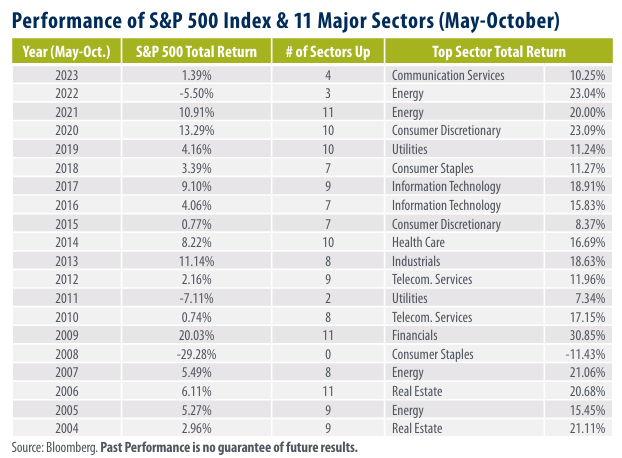
View from the Observation Deck
The old axiom in the stock market about selling your stocks at the close of April and then buying back in at the start of November once made some sense from a seasonality standpoint. When the U.S. was more of an industrialized economy it was common for plants and factories to close for a month or longer in the summer to retool and allow employees to vacation. The theory was that companies would conduct less commerce in that six-month span, which would likely translate into lower earnings. Today, due in large part to globalization, the world is far more interconnected and competitive, and there is less room for downtime, in our opinion.
• From 2004 through 2023, there were just three instances (2008, 2011 & 2022) in which the S&P 500 Index posted a negative total return from May through October, and the 2008 occurrence was during the financial crisis.
• The average total return for the S&P 500 Index for the May-October periods in the table was 3.37%, which is nothing to run from, in our opinion.
• Seventeen of the twenty top-performing sectors in the table posted total returns in excess of 10.00% (May-October). For comparative purposes, from 1926-2023 (98 years), the S&P 500 Index posted an average annual total return of 10.27%, according to Ibbotson & Associates/Morningstar.
Takeaway
We publish today’s table on an annual basis as a reminder to investors that not all market maxims should be taken at face value. In this case, the data presented does not support the notion that investors should “sell in May and go away”. Over the last 20 years, an investor who remained fully invested in the S&P 500 Index from May to October enjoyed an average annual total return of 3.37%, which is a significant figure when compounded. We continue to advocate that investors consider their time horizons and take risk as appropriate. For many, missing out on six months of equity market returns is a risk not worth taking, in our view.



